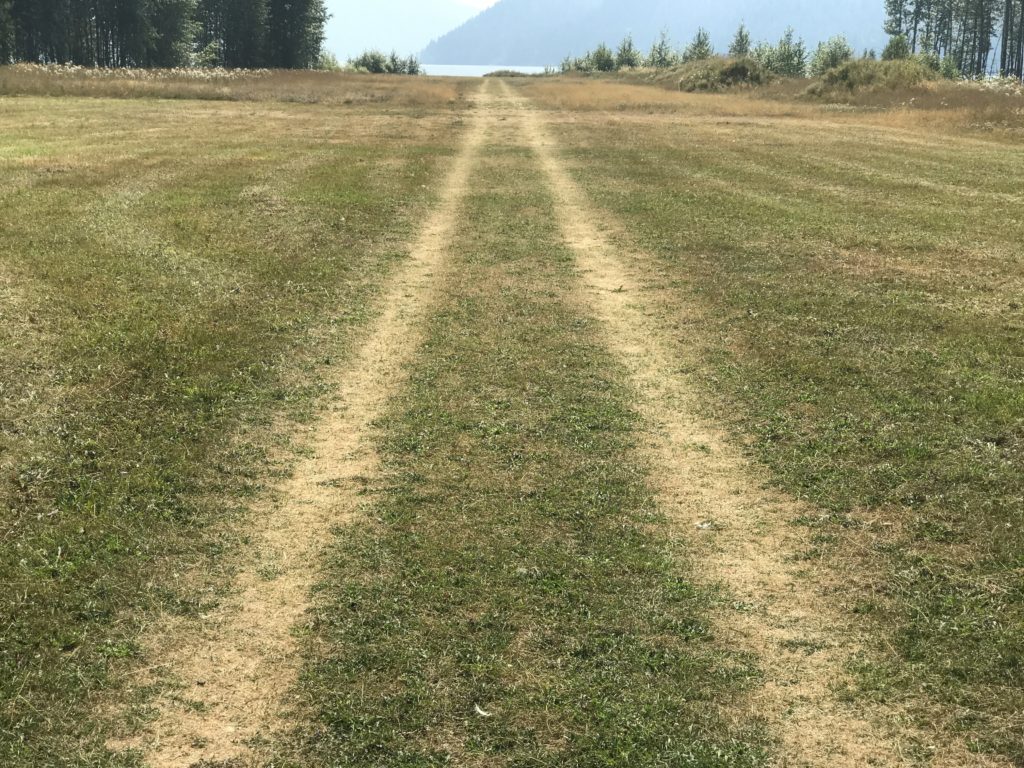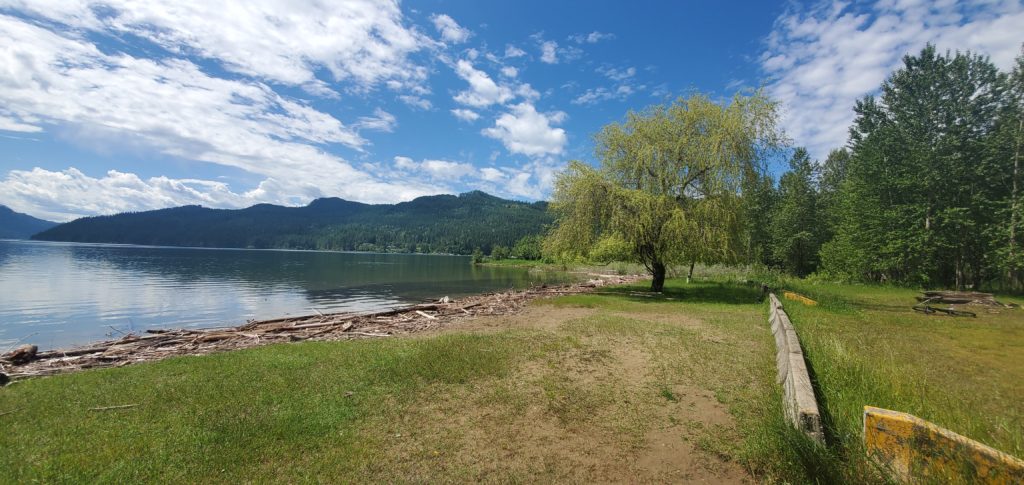REGIONAL DISTRICT OF CENTRAL KOOTENAY – MEDIA RELEASE
For immediate release: November 10, 2020
Click here to view on the RDCK website

Nelson, BC: The Regional District of Central Kootenay (RDCK) is set to begin construction on a new vehicle access road at Crawford Creek Regional Park. The new road will be constructed where the former airstrip is located. Minor disruptions to park users may occur for the duration of this project. Opening of the access road is planned for spring 2021.
“Past flooding events on Crawford Creek led to high water levels that caused serious damage and significantly eroded the existing access road to the park,” said Garry Jackman, RDCK Electoral Area A Director. “The RDCK has committed to constructing a suitable access road in order to ensure there will be continued access to the park for all users.”
Following environmental assessment recommendations and the review of recent floodplain mapping it was determined the low lying route of the existing road is not suitable for reconstruction. The new access road will be approximately 800 meters long and will follow the alignment of the former airstrip. The road will stop at the edge of crown land where there will be a small parking area. Vehicle access beyond this point over crown land can be considered as part of the future management planning.
“The access road will be constructed on higher ground,” said Cary Gaynor, Regional Parks Manager. “Once this project is complete there will be public engagement to inform a future park management plan that provides strategic direction for how Crawford Creek Regional Park is managed in the long term.”

The existing access road to the park has been closed since May 29, 2020 when flooding of Crawford Creek compromised the road. The new road will allow for improved pedestrian access in addition to managing the flow of vehicles in and out of the park. At a later date, the repurposing of the old access road to a non-motorized trail may be considered.
Residents are also encouraged to visit www.rdck.ca/parks to review the biophysical assessment report that was completed for the park. This report provides a baseline of information that can be used to aid in the production of a future park management plan and to better manage projects in the park in a more sustainable manner.
Incorporated in 1965, the Regional District of Central Kootenay (RDCK) is a local government that serves 60,000 residents in 11 electoral areas and nine member municipalities. The RDCK provides more than 160 services, including community facilities, fire protection and emergency services, grants, planning and land use, regional parks, resource recovery and handling, transit, water services and much more. For more information about the RDCK, visit www.rdck.ca.

2 Responses
Though unpopular with some Eastshore residents I think that well planned access to the park is a good first step. Moving the road away from the riparian zone is a good thing, too. I look forward to the public process regarding management of the area and hope it includes thoughtful discussions on conflicts between recreational human use and protection of habitat for existing plants and animals. In particular I see issues with equestrian use of the foreshore, particularly to the West of the planned road causing contamination by weed species and off leash dogs harassing wildlife and waterfowl. Perhaps the designation of an off leash dog ‘park’ close to Highway 3A could help with this.
I would also like to see the look of a long, straight access road made more natural looking with the planting of trees and mini-parking sites suitable for one or two cars whose occupants might not want to end up at the beach.
As the road construction commences, I see no indication that there will be barriers or ditches to prevent vehicles from tearing around the surrounding field. This is greatly disturbing as there are at-risk species in this area. Tyre tracks there this month already prove joy riders are already unleashing destruction to this natural habitat. Keeping the beach as walk in only would also reduce garbage being left there (ie: a transmission leaking fluids)